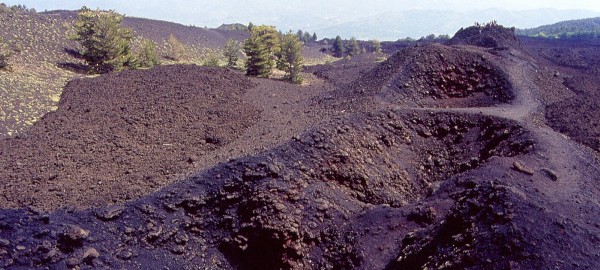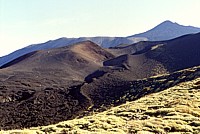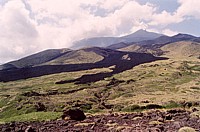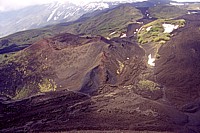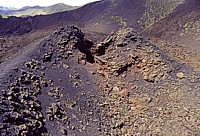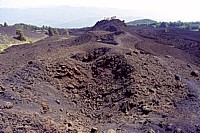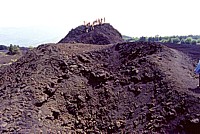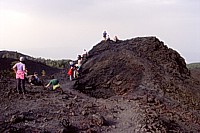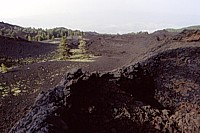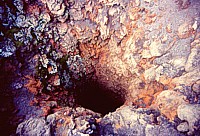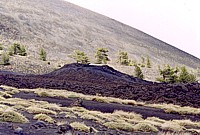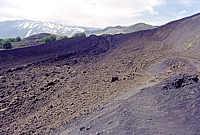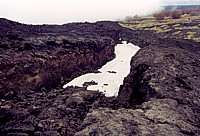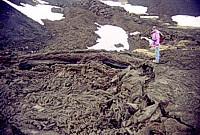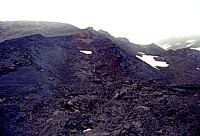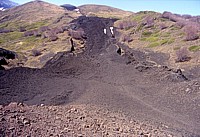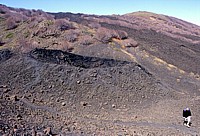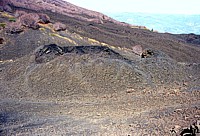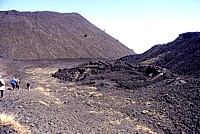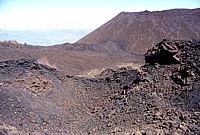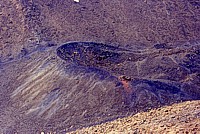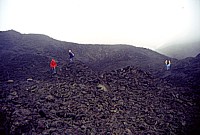| Etna
index |
||
| Geology | Geological history | Cones and craters |
| Eruptive characteristics | Eruptions before 1971 | Eruptions since 1971 |
| Etna and Man | References | Web sites |
| Weather forecasts | FAQ | Latest news |
Mamma
Etna's countless children
1923 eruptive fissures
NE flank, 15.028353° E, 37.807783° N (largest cone near Monte
Nero)
Mean elevation: 1900 m
![]()
In
June-July 1923, the Northeast Rift, which had been the site of frequent
eruptions in the past, opened once more, only twelve years after another
large eruption in nearly the same area. This eruption had been preceded
by several weeks of intense activity at the Northeast Crater and thus
represents a fine example of a flank eruption following increased summit
activity, a scheme that has become more common since the second half of
the 20th century.
A very complex system of new eruptive fissures became active with this
new eruption. The main fissures formed in the area immediately around
Monte Nero, a huge pyroclastic cone formed in 1646-1647. One fissure opened
immediately uprift from that cone, then the feeder dike propagated directly
towards Monte Nero and was split up into three branches, probably because
the presence of the cone presented a structural obstacle to the propagating
dike. One branch passed towards the west, where a small horseshoe-shaped
cone was built up, a second branch passed right through Monte Nero and
a small lava flow was erupted from the northeastern side of its cone,
almost from the same site where lava had been emitted during the 1646-1647
eruption. The third and largest eruptive fissure opened at the eastern
base of Monte Nero, and here a spectacular row of small spatter cones
and hornitos was formed, while lava flowed in a broad river in the direction
of Linguaglossa. This lava flow reached the western outskirts of that
town and destroyed a few buildings; furthermore it buried a section of
the Circumetnea railway and the nearby State Road. Never during its history
had Linguaglossa been so close to destruction.
The eruptive vents of the 1923 eruption are among the most impressive
and instructive volcanic features to be seen in the Monte Nero area. Fortunately
the nearby eruption of October-November 2002 did not bury these sites,
although new vents opened just a few hundred meters to the east (unfortunately
they emitted lava flows that virtually obliterated the tourist facilities
of Piano Provenzana). The main fissure at the eastern base of Monte Nero
is almost in the same state as immediately after the 1923 eruption, with
the exception that narrow footpaths are now leading around the countless
vents and cones on the fissure. Some of the spatter cones reach heights
of up to 10 m, most are much smaller, and there are numerous small vents,
mere holes in the ground, sometimes only a few tens of centimeters wide
but their bottom seems to lie at endless depth.
Like Monte Nero, I have visited the 1923 fissures on many occasions since
early May 2000, often with groups of geology students for which the Monte
Nero area serves as a phantastic laboratory in volcanology.
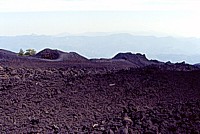 |
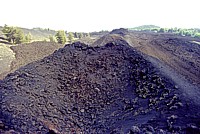 |
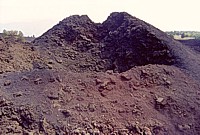 |
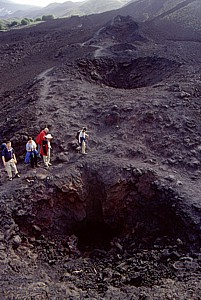 |
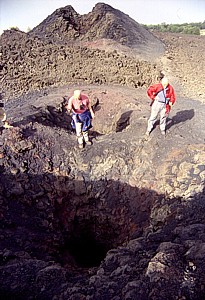 |
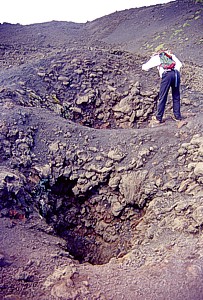 |
Excursionists
and students discovering the vents on the main 1923 fissure one
after one, in late May 2001 (left and center) and in late May 2000
(right) |
||
Copyright © Boris Behncke, "Italy's Volcanoes: The Cradle of Volcanology"
Page set up on 23 February 2004, last modified on 21 March 2004

